Avant Garde Food Photography Fashion Fine Art African American
A History of Nutrient Photography
Food photography, although not covered in many history books, has been a subject since the early on 1800s. Every bit a competition jubilant diverse food photography globally, Pink Lady® Food Lensman of the Year, wanted to discover more than about its journeying through history.
Throughout fourth dimension, as food has been much consumed, it has also been photographed. Until recently, food photography was considered crass and unworthy of artistic attention, yet nutrient across the globe is much more than nourishment in our consumerist culture. Rather, the subject of food through time demonstrates symbolic meaning.
Methods, equipment, and manner used in food photography have, still, inverse this significantly. It has now become a platform for artistic representation and experimentation. In mod times, involvement in food photography has become much more widespread and diverse. Photographing food has go a part of our everyday dining experiences, and the development of social media platforms has accelerated this.
Despite its complex changing nature, food photography tin can be seen to accept originated from withal life paintings and arguably had adult through this art grade. We wanted to explore food photography from its origins, throughout fundamental movements in history, and how the genre has been used artistically through time.
Since its inception in 2011, Pink Lady® Food Photographer of the Twelvemonth has covered the full cultural range of the delineation of nutrient in society. Each category tin can also be seen to highlight the complex development of food photography through time, and photographs entered to the competition through the years can be seen to illustrate this changing nature of the bailiwick. We wanted to highlight some changing styles and techniques which nosotros have analysed, suggest our tips and tricks, and showcase how they tin can be used in food photography today.
A TIMELINE HISTORY OF FOOD PHOTOGRAPHY ORIGINS
In examining the history of nutrient photography, nosotros must outset look at its origins. Nutrient photography can exist seen every bit originating from still life paintings in the 1800s. They tin be seen to use key aspects of interest that we also see in contemporary work – from effects of light, composition, allegory and significant, to indicators of class and lifestyle.
Many of these old paintings display food as the subject area matter, cartoon attention to its natural beauty. Artists such Michelangelo Merisi de Caravaggio equanimous realistic depictions of fruit. In this, we see the origins of food styling, where objects were meticulously arranged to boast their painting skills. These paintings highlight aspects of still life techniques which have been transferred to food photography since.

Europe 17th and 18thursday century
Rome and cities of holland and Northern France were the leading regions of nonetheless life painting, depicting tables of nutrient, game in kitchens, and where sweet dishes were imperative. Spanish still life, 'bodegon' (literally 'cellar') focused on just a few kinds of nutrient in a small area.
Meanwhile England, produced its own conventions; dishes ready out on the table usually had some hint of contempo consumption but with no-ane in sight, as if the pantry was emptied to grade a beautiful system of meat, staff of life, cheese and fruit. The food seemed more attainable if in that location were no people around. Dutch painters of the 17th century piled succulent foods high amongst fine tableware, reinforcing the thought that a full larder was a sign of wealth.
The 18thursday century saw more than elaborate still life paintings - carefully called food with unusual shape or texture. Grand banquets appeared in their entirety.
Jean-Baptiste-Simeon Chardin, a significant nonetheless life painter, produced many realist paintings in the 1700'south. Everyday objects gained dreamlike elements yet blended into a realistic atmosphere. Much of his work showed seasonal food at religious events. Juxtaposing food and kitchen utensils suggested that a meal was existence prepared. This display of class and status past wealthy people at the time is a significant historical point when assessing contemporary food photography.

19th Century
'Nutrient' photographs first appeared in the early 19th century resembling still lifes, focusing on realism, composition, and importantly lighting effects - essential to whatever photograph. Photography's first nevertheless life was a table fix for a meal, by Nicephore Niepce in 1827. However, the almost well-known images are Henry Fox Talbot's 'The Pencil of Nature' of 1846, showing fruit baskets on patterned tablecloths. Their compositions are reminiscent of 17thursday century Flemish nonetheless-life paintings.

The newly established medium of photography radically renewed the Impressionist art movement. Impressionism in however life paintings focussed on consumption and course - the painter created a seemingly natural scene of objects despite conscientious system. Rather than mirroring a scene like these early notwithstanding-life photographs, artists personally depicted their ain visual experience.
Although monochrome pictures began to appear in early on cookery books, the procedure was slow. Professional photographers used the one-half-tone process for cheaper reproduction. By breaking the images into a serial of dots, it was much easier to reproduce the full tonal range of a photograph in print.
Food illustrations were often seen in cookbooks. Chromolithographs featured in 'Le Livre de Cuisine' ("The Royal Cookery Volume") past well-known French chef, Jules Gouffe. Printed in Paris, 1867, the book contains 25 chromolithograph plates printed in colour. Images like this chromolithograph plate may have influenced contemporary images of abundant food. As photography became a popular medium, advancements in printing paved the way for easier production.

AN INTRODUCTION OF COLOUR
While the first colour photograph appeared in 1861, colour photography in cookbooks waited until the 1930'southward - colour printing was difficult. Colour food photography appeared equally early as 1935, when Nickolas Muray start adapted the three-colour carbro procedure.McCall's commissioned Murray to create colour photographs for their cooking and nutrient pages. He used the colour carbro process to make rich and colourful photographs of food spreads for the magazine and for other advertisers through the 1950s. Inside the context of commercial photography, the images' rich colours grab the reader's attention. Blackness and white photography in food has, though, connected to be used to this mean solar day.

THE DEVELOPMENT OF FOOD PHOTOGRAPHY IN COMPETITION
From styled food for magazines to images of families eating together in celebration of religious festivals through to food influencers and chef food in action. From Street Food to nutrient growing in its natural setting, Pinkish Lady® Food Photographer of the Years categories encompass all aspects of food photography both culturally and globally.
Nosotros wanted to wait back at a couple of the styles and techniques that food photography has displayed through fourth dimension to how these have been, and can exist, applied to food photography now.
PROPS
First, we wanted to explore the use of props – from cutlery, cups, plates and chopping boards, to tablecloths, napkins and even salt and pepper shakers. Props have been continually used through the development of food photography to set the scene of a photo, making nutrient the centre of attention.
How have props been used through time…
Traditionally props used in withal life paintings suggested many unlike elements about a meal. Gold or silver at the table in Renaissance times instilled wealth and elegance. In the 17th century, the prominence of silverware in paintings symbolised upper class values.

The painting above shows the utilise of props in the 18th century. The cooking pot and skimmer suggest that the salmon and mushrooms are nearly to be cooked. If these were removed from the scene replaced by pewter dishes for example, it would mean the food is ready to be served. Paintings before the 18th century tended non to show a fork amid the cutlery as just a spoon and knife were usually used.
Our tips for prop use…
Sometimes you accept no command over props and surroundings. When shooting photojournalistic images at a street market for example, you demand to think quickly with no time to motion things out the style. Merely when you lot exercise have control over props, think:
- What scene are you lot trying to testify? A modern dinner? Or something more rustic or old-fashioned?
- What'due south the season? Christmas? Summer with a BBQ?
- Are you close to the food? Further away?
- Should viewers experience they are about to consume the meal? Do they need a knife and fork?
- Is food about to be cooked? Or all fix for serving?"
How props have been used at present…
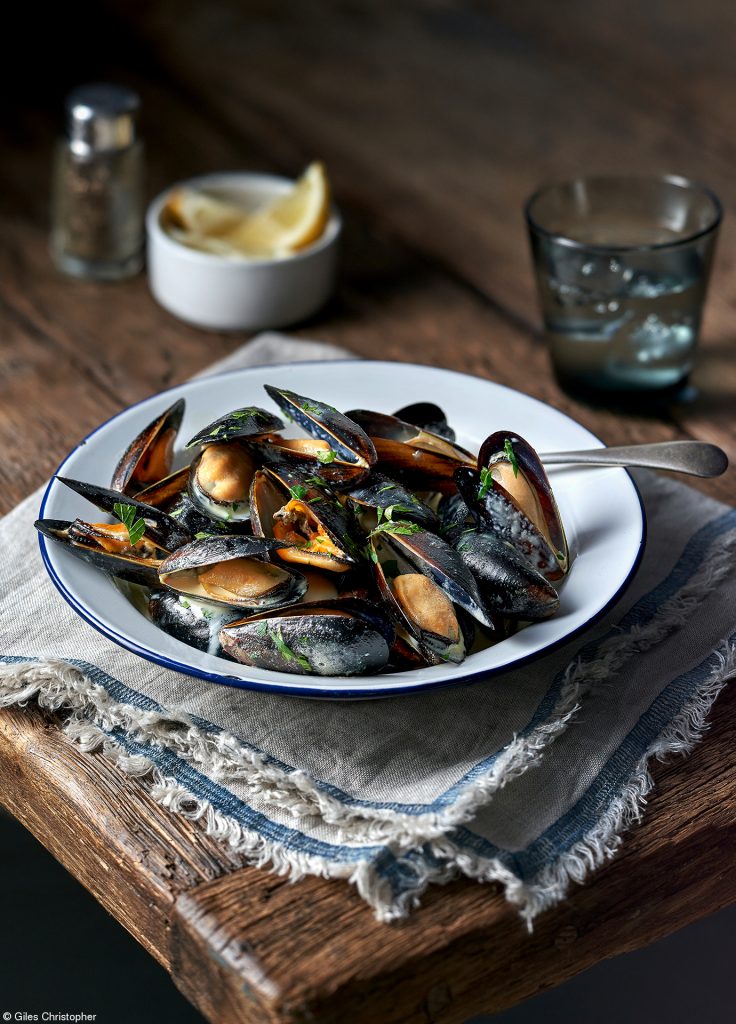
Like some of the early paintings, like props can exist seen to be used today. This finalist image, 'Muscles Ready to Eat', highlights how props at present are still used to gear up the scene. The props aid u.s.a. identify that the dish is fix to exist eaten.
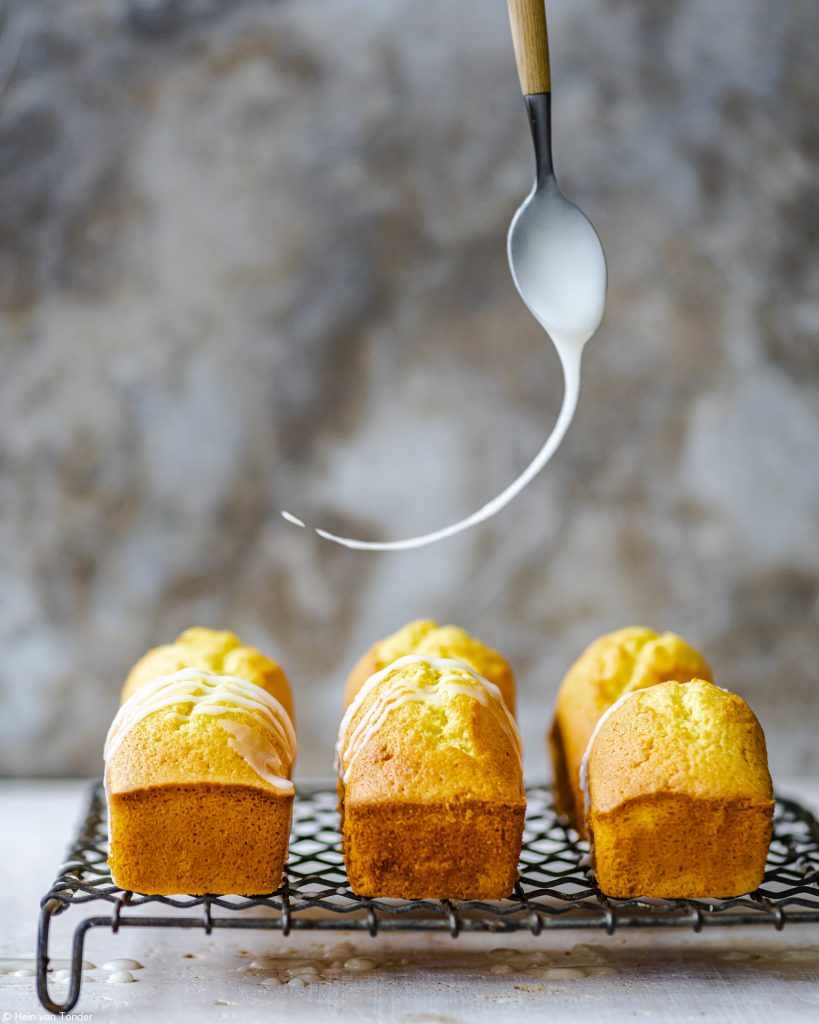
Props are also at present used in food photography with an element of action. Rather than a finished meal, they are used equally a narrative to the product of food. Here, Hein Van Tonder has captured movement through his photograph with the use of an icing spoon. The prop itself is giving united states of america a story to the photo, with the food remaining the middle of attending. This can been seen a lot in other finalist work from Marks & Spencer Food Portraiture.
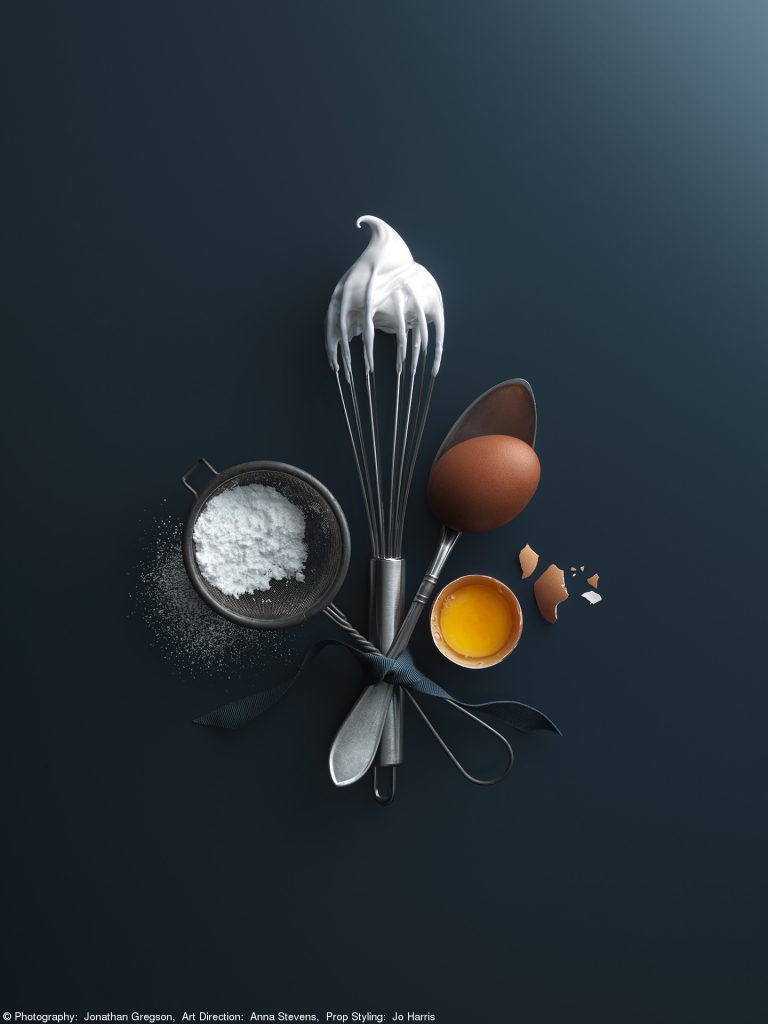
With the increasing importance of nutrient styling, props have been used in much more than inventive ways though food photography. Here, the props can be seen as existence as important as the food itself. In this finalist image, we can see that the props themselves are used to suggest the food that is being produced, in addition to the raw ingredients. In modern food photography, the props can be seen to be just as beautiful every bit the food.
Color PHOTOGRAPHY
How colour has developed through fourth dimension…
The development of colour has undoubtedly changed the nature of photography, and specifically food photography. For some photographers, such equally Claire Aho, a pioneer in Finnish colour photography, colour and its inception inspired their work.
Earlier the evolution of colour photography, photographers had no selection just to shoot in black and white as this was all that was available. Photographers similar Edward Weston and Edward Quigley focused on the dramatic interaction of calorie-free and shadow to emphasize the texture of the chosen objects in their photographs.

When you await at the arrangement of the peas in Quigley'south prototype, it draws your attention to their shape and dazzler, while Weston's tight crop and dramatic lighting promotes the pepper's twisting curves. These aspects make for very visually dynamic images.

Prior to colour film, many food photographs for cookbooks and mag advertisements were shot in black and white and had colour, ordinarily pastels, crayons, watercolours, or oils painted over them. Manus-coloured photographs were a well-respected art class in Japan in the 1800s; one bully advantage of mitt colouring was that the pigments used in the oil-based paints increased the shelf life and quality of the photographs.
Our tips for enhancing colour…
These days, there are many ways to practise colour-enhance photographs digitally, besides as by hand. By enhancing certain colours in the images, yous can draw the viewers' attention to say, the redness of some tomatoes at a market scene or the freshness of green herbs in a dish.
Black and White food photography at present…
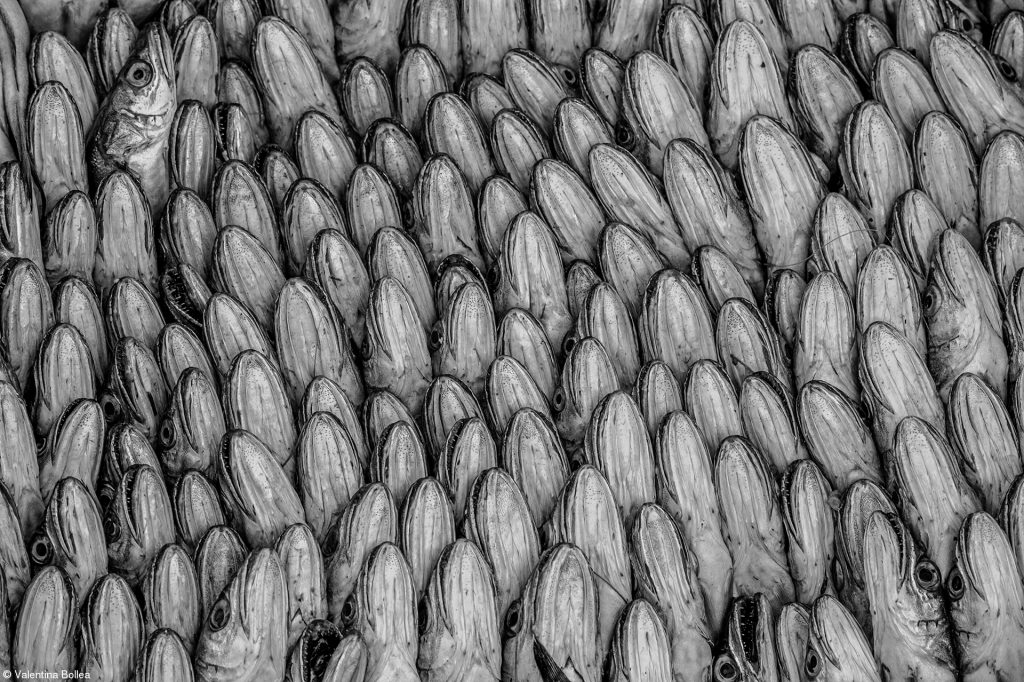
Black and white photography is notwithstanding used today by choice to emphasise texture. Valentina Bollea displays how blackness and white photography accentuates the lines and details of these fish. Even though the photo is comprised of nutrient only, the patterning and lack of colour creates more of an artistry to the paradigm, where we are drawn in to learn what nutrient is actually in the image.
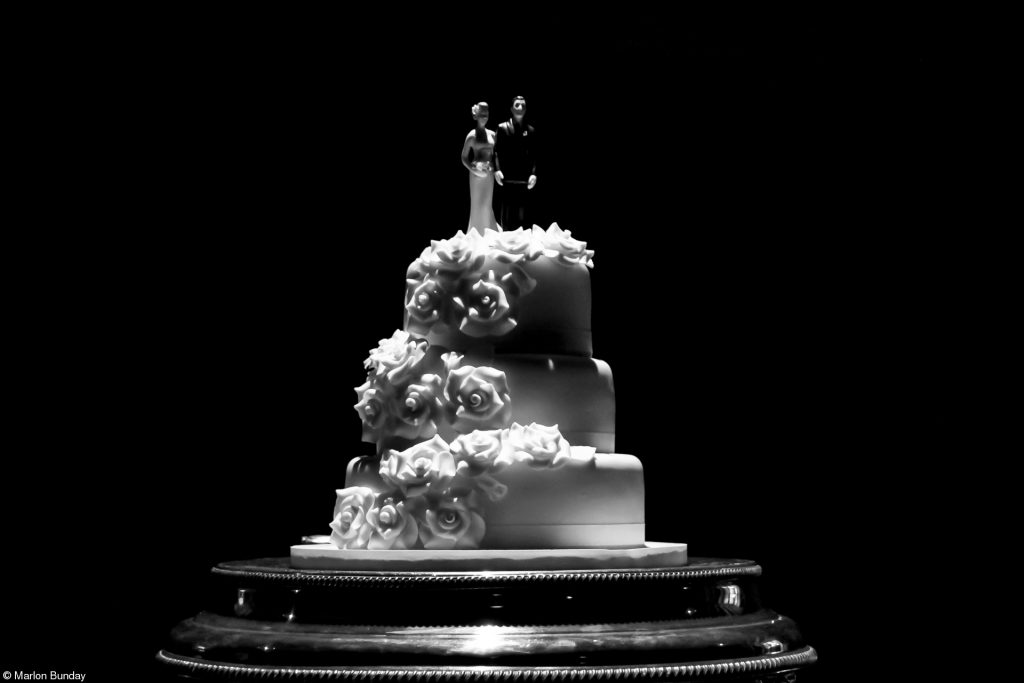
Every bit in the past, black and white is used in food photography at present to emphasise texture, lighting, and shadows. In the epitome higher up, Marlon Bunday draws the viewers attending to the floral icing ornamentation on the cake. The lack of colour brings about an importance to those parts of the cake that she is wanting to highlight.
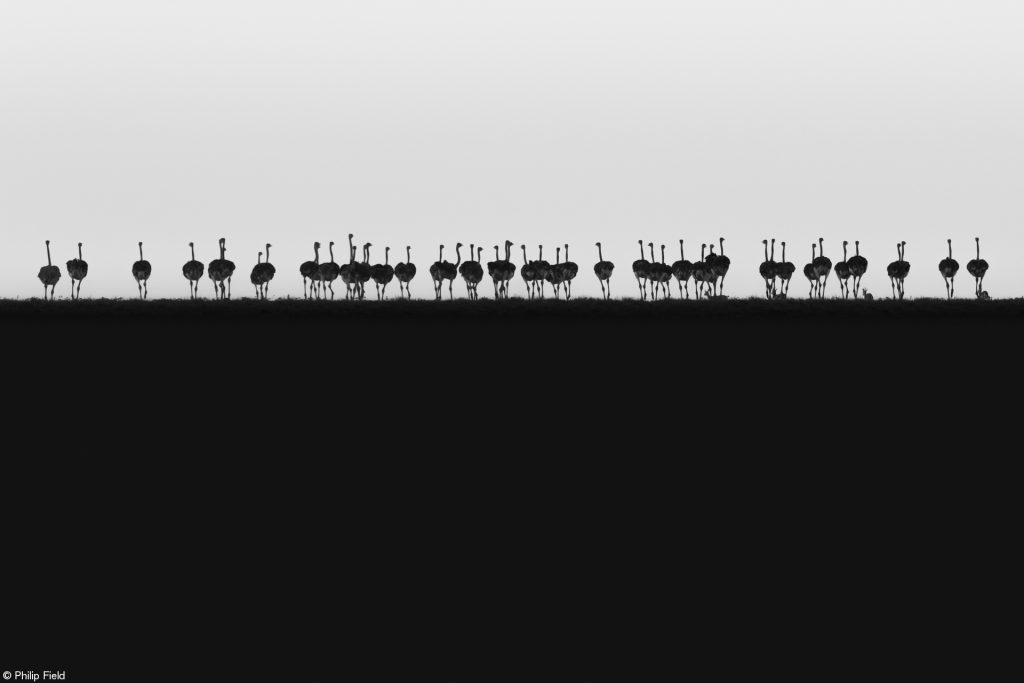
Black and white photography is not just used in food portraiture. Food photography has grown to reflect the whole of the food industry. Pinkish Lady® Nutrient Photographer of the Year has introduced many categories to represent food beyond the global industry, from Bring Home the Harvest to Globe Food Program Food for Life. In the paradigm above, Philip Field uses black and white to create a stardom between the Food and the Field.
This is just a snapshot of how nutrient photography has developed through time, merely nosotros hope that it has provided an insight and inspiration into styles and techniques that remain the same in our constantly irresolute nature of food photography.
To learn more than tips and tricks, or to proceeds useful insight into the competition please visit our blogs department.
For further tips and tricks for nutrient photography, read more.
Inspire yourself and be immersed in the breath-taking photos of our previous winners, delight visit our finalists' gallery.
Desire to endeavour your hand at Food photography and enter our competition? Annals now.
With thanks to Helen Grace Ventura Thomson for her contribution.
0 Response to "Avant Garde Food Photography Fashion Fine Art African American"
Post a Comment